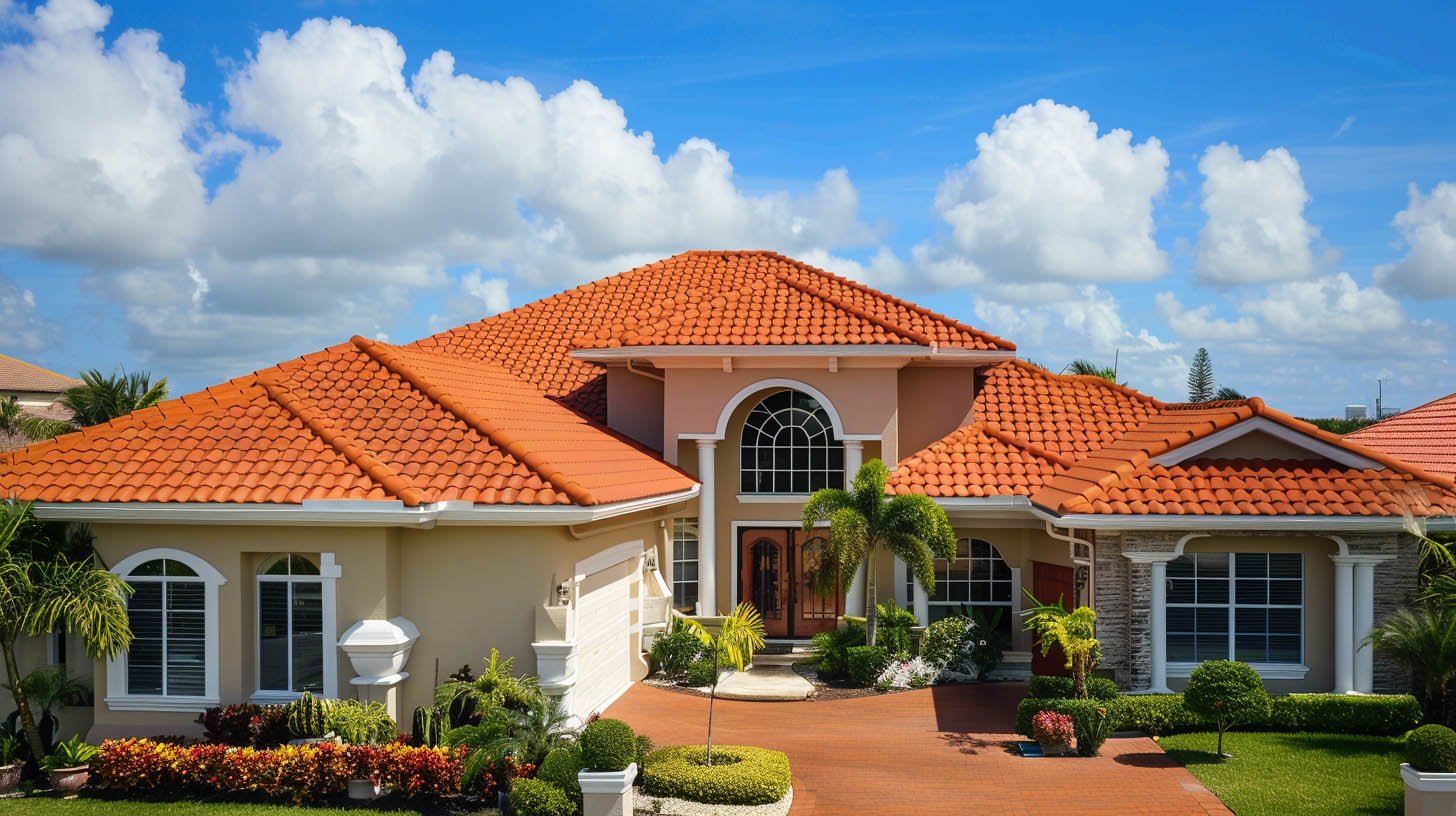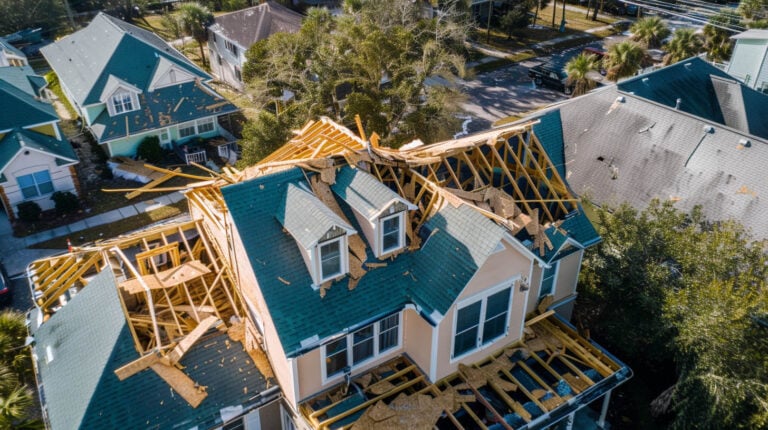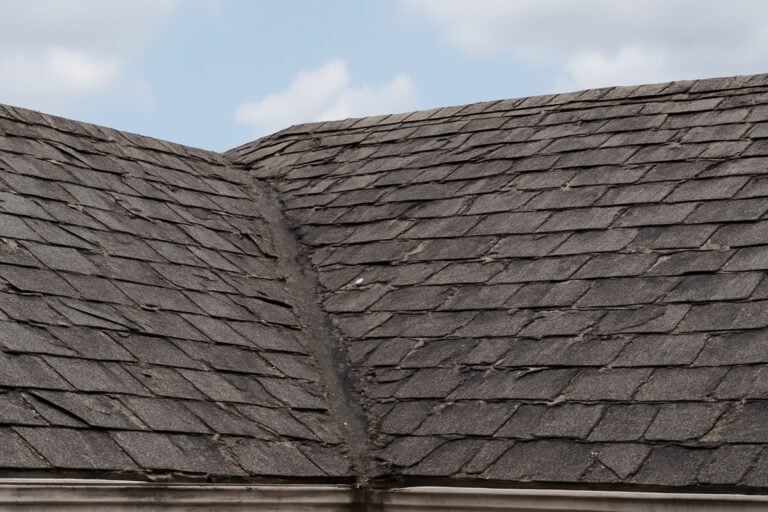Selecting the perfect color for your Florida home’s roof is a bigger decision than you might think. It goes beyond just what looks good from the street. The right roof colors can enhance your home’s curb appeal, improve energy efficiency, and contribute to a more comfortable living space. This guide will walk you through how to choose a color that is not only beautiful but also practical for our unique climate.
Key Factors in Choosing Roof Colors for Florida Homes
Making the right roof color choice involves balancing aesthetics with practicality. For Florida homeowners, this means considering how a color complements the style of your home while also standing up to our unique climate.
Thinking about these elements will help you select a roof that looks great and performs well for years. We will explore how to weigh curb appeal against climate needs to find your perfect match.
The Role of Curb Appeal in Roof Color Selection
Selecting the right roof color significantly impacts your home’s aesthetic appeal and overall curb appeal. A well-chosen color complements the architectural style of your home and its natural surroundings. This careful consideration not only enhances the appearance but can also influence potential resale value. Florida homeowners often gravitate toward shades that resonate with local themes, striking a balance between the timeless appeal of neutral colors and brighter options that evoke a lively atmosphere, making their property inviting under the intense sunlight.
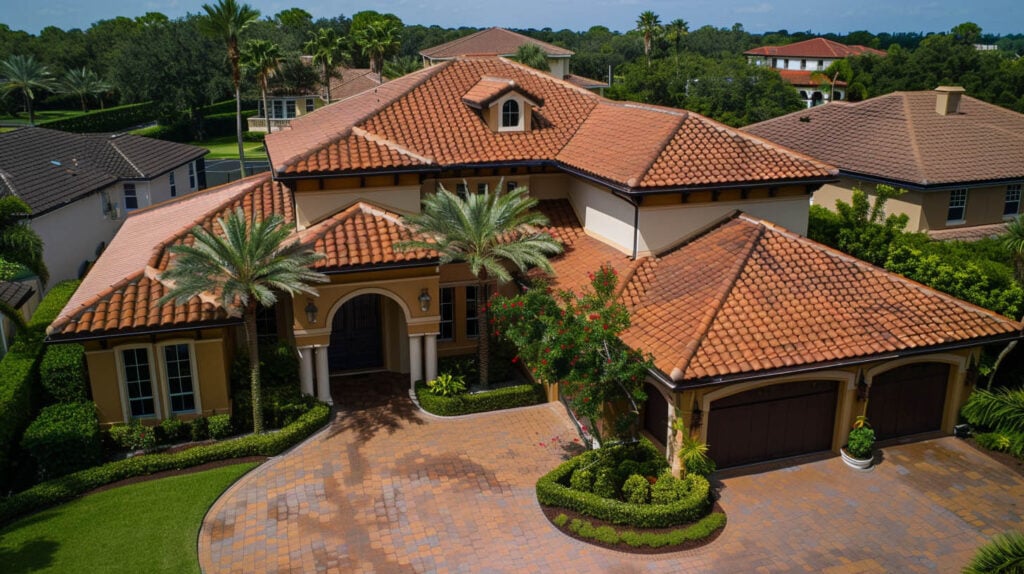
How Florida’s Climate Influences Roofing Choices
In Florida, the unique climate significantly influences roofing choices, emphasizing the need for materials that withstand intense sunlight and humidity. Homeowners are often guided to select lighter colors to reduce heat absorption, aiding in optimal energy efficiency. This not only keeps air conditioning costs down but also enhances the overall look of a home. Additionally, local building codes may dictate specific materials and colors to ensure durability against storms, making informed choices essential for long-term satisfaction and curb appeal.
Popular Roofing Colors
When driving through Florida neighborhoods, you might notice that certain roof colors are more common than others. These popular roof colors are favored for good reasons, as they masterfully blend aesthetic appeal with the need for energy efficiency.
These shades are specifically suited for our unique climate, helping to keep homes cooler under the intense sun. Let’s look at some trending options that offer both timeless style and practical benefits.
Trending Roof Color Options for Tampa, FL
Neutral colors dominate the roof color landscape in Tampa, FL, offering a timeless appeal that complements a variety of architectural styles. Light hues, such as sandy beige and soft gray, not only enhance a home’s curb appeal but also contribute to optimal energy efficiency by reflecting sunlight. Additionally, earthy tones like terracotta and olive green are gaining popularity, providing a harmonious blend with Florida’s natural surroundings. These color choices maintain the aesthetic appeal while ensuring practicality in the face of the region’s intense climate.
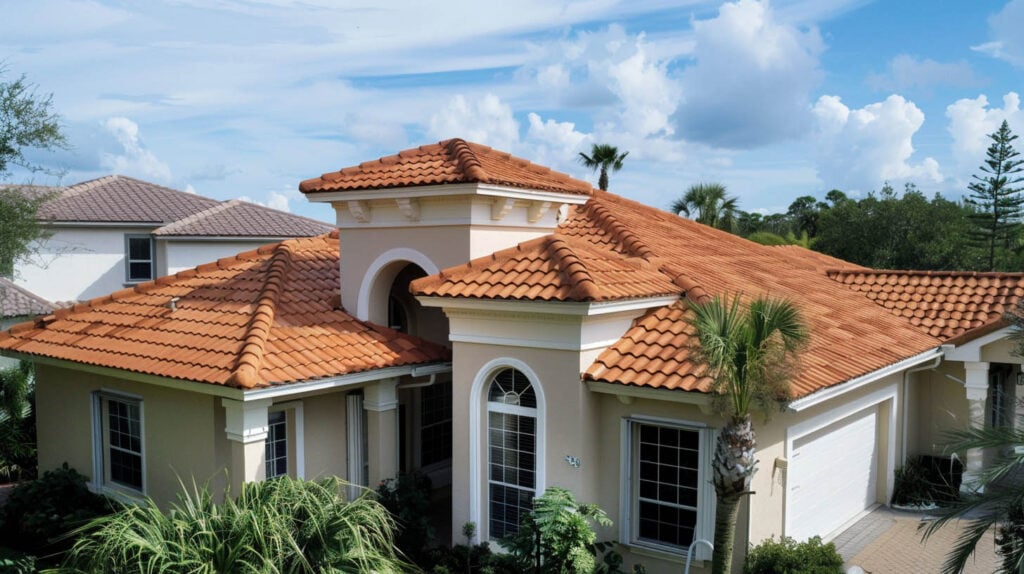
Balancing Style with Sun Resistance
Selecting a roof color necessitates the perfect amalgamation of aesthetic appeal and sun resistance, particularly in Florida’s unique climate. Lighter colors such as whites and soft pastels reflect much heat, enhancing the home’s energy efficiency. Conversely, deeper tones may complement the architectural style but can absorb significant heat. Achieving a balance ensures that the appearance of your home harmonizes with both its energy performance and the natural surroundings, providing a stylish yet practical solution for Florida homeowners.
Energy Efficiency and Cooling Benefits of Roof Colors
A roof’s color has a direct impact on your home’s energy efficiency. By reflecting more sunlight, a lighter-colored roof can keep your home cool and reduce the workload on your air conditioning system. This simple choice can lead to noticeable savings on your monthly energy costs.
Understanding this connection is key to making a smart investment in your new roof. We will now examine how different colors affect your utility bills and overall indoor comfort.
How Lighter vs. Darker Roof Colors Impact Utility Costs
Selecting lighter roof colors can significantly lower your energy bills. These shades reflect more sunlight, reducing heat absorption, which helps maintain cooler indoor temperatures, especially in Florida’s unique climate. Conversely, darker roofs absorb more heat, making air conditioning systems work harder to keep homes comfortable, thus increasing utility costs. Careful consideration of roof color not only enhances your home’s aesthetic appeal but also promotes optimal energy efficiency—making it a critical decision for Florida homeowners looking to maximize their home’s value.
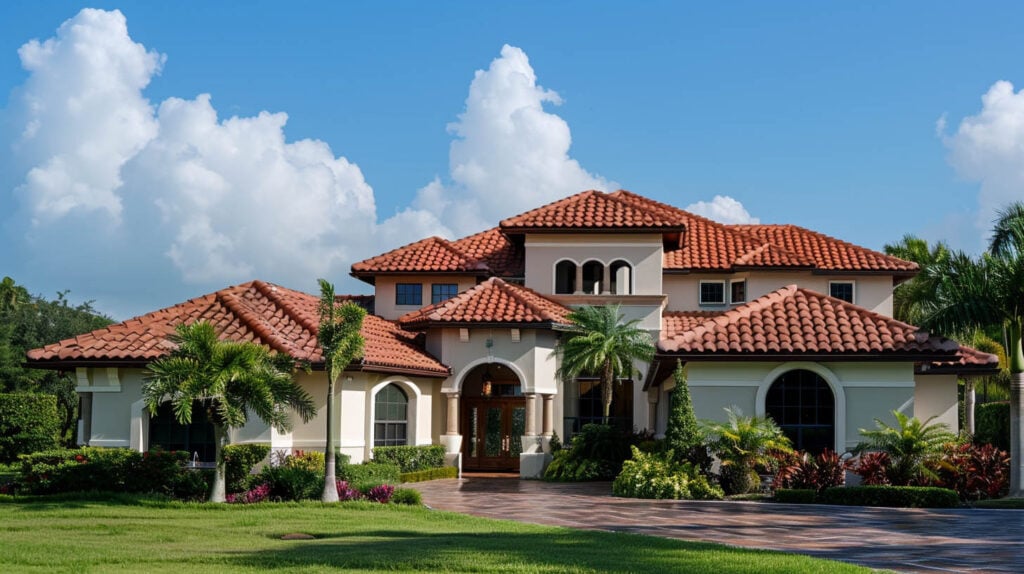
Ways Roof Color Can Help Maintain Comfortable Indoor Temperatures
Your roof is your home’s first line of defense against intense sunlight. By selecting the right color, you can make your home cooler and more comfortable year-round. A roof that reflects sunlight prevents excess heat from penetrating your attic and living spaces.
This means your air conditioning system doesn’t have to work as hard to maintain a pleasant indoor temperature. You will experience fewer hot spots and more consistent comfort throughout your home, even on the hottest summer days.
Achieving optimal energy efficiency is about making smart choices. Picking a lighter roof color is a simple yet powerful way to create a more comfortable environment while saving money.
Matching Roof Color with Materials
The roofing material you choose will influence the available roof colors and textures. At Steadfast Roofing, we partner with leading manufacturers like Atlas, Owens Corning, IKO, Eagle, and Westlake to offer a wide selection of high-quality materials.
Whether you prefer asphalt shingles, tile, or metal, we can help you find the right color to match your vision. Our team will guide you through the options to ensure your new roof is both durable and beautiful.
Best Color Choices for Asphalt Shingles, Tile, and Metal Roofs
Each roofing material offers unique color options. As an Atlas Gold Certified and Owens Corning Preferred Contractor, we can help you choose the best roof color for your material.
Popular choices include:
- Asphalt Shingles: Wide range of colors, from cool grays to warm beiges.
- Tile Roofs: Options beyond red—consider sand, white, or gray for better heat reflection.
- Metal Roofs: Highly reflective finishes such as white, light bronze, and gray.
- Reflectivity Matters: Ask about solar reflectance ratings for maximum energy efficiency.
Select a color that enhances your home and provides optimal cooling for Florida’s climate.
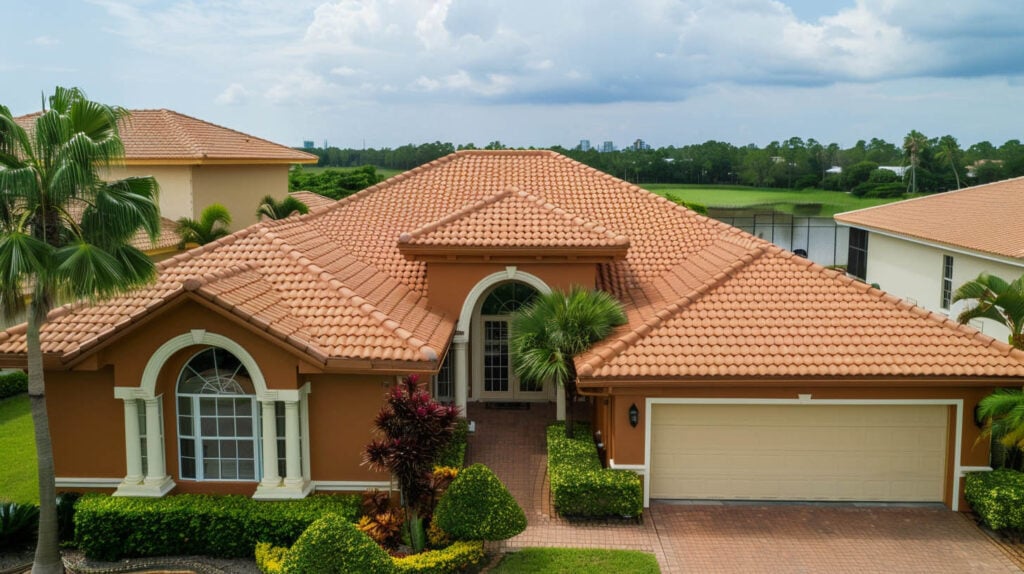
Recommendations for Durable Roofing
In Florida, your roof needs to be tough—not just attractive. Hurricane-resistant materials like fortified shingles, interlocking metal roofs, and securely fastened tiles offer superior protection against high winds and heavy rain. As an IKO RoofPro Select Contractor, we provide access to top-tier, durable options.
You don’t have to compromise on style; these roofs come in a range of light, energy-efficient colors, giving your home both curb appeal and reliable performance in Florida’s climate.
In Summary
Making the right choice for roofing colors can significantly impact not only the aesthetic appeal of your home but also its energy efficiency in Florida’s unique climate. By carefully considering local building codes and the architectural style of your home, you can achieve a look that enhances your home’s curb appeal while optimizing energy costs. Whether opting for timeless earth tones or lighter shades, seeking expert guidance ensures that you select the best roofing colors to complement your property and improve its resale value.
Frequently Asked Questions
What is the best color roof for a cold climate?
In colder climates, dark roofs are often the best choice. Their high heat absorption helps melt snow and ice faster and can contribute to energy efficiency by passively warming the home, which may slightly reduce heating costs during long, cold winters.
Should your roof be lighter or darker than your house?
This depends on your desired architectural style. A roof that is darker than the house creates a traditional, grounded look. A roof that is lighter or similar in tone can create a modern, monochromatic look. The goal is to create a harmonious color scheme that enhances your home’s curb appeal.
Read our blog: DIY Roof Repairs: What You Can Safely Do
